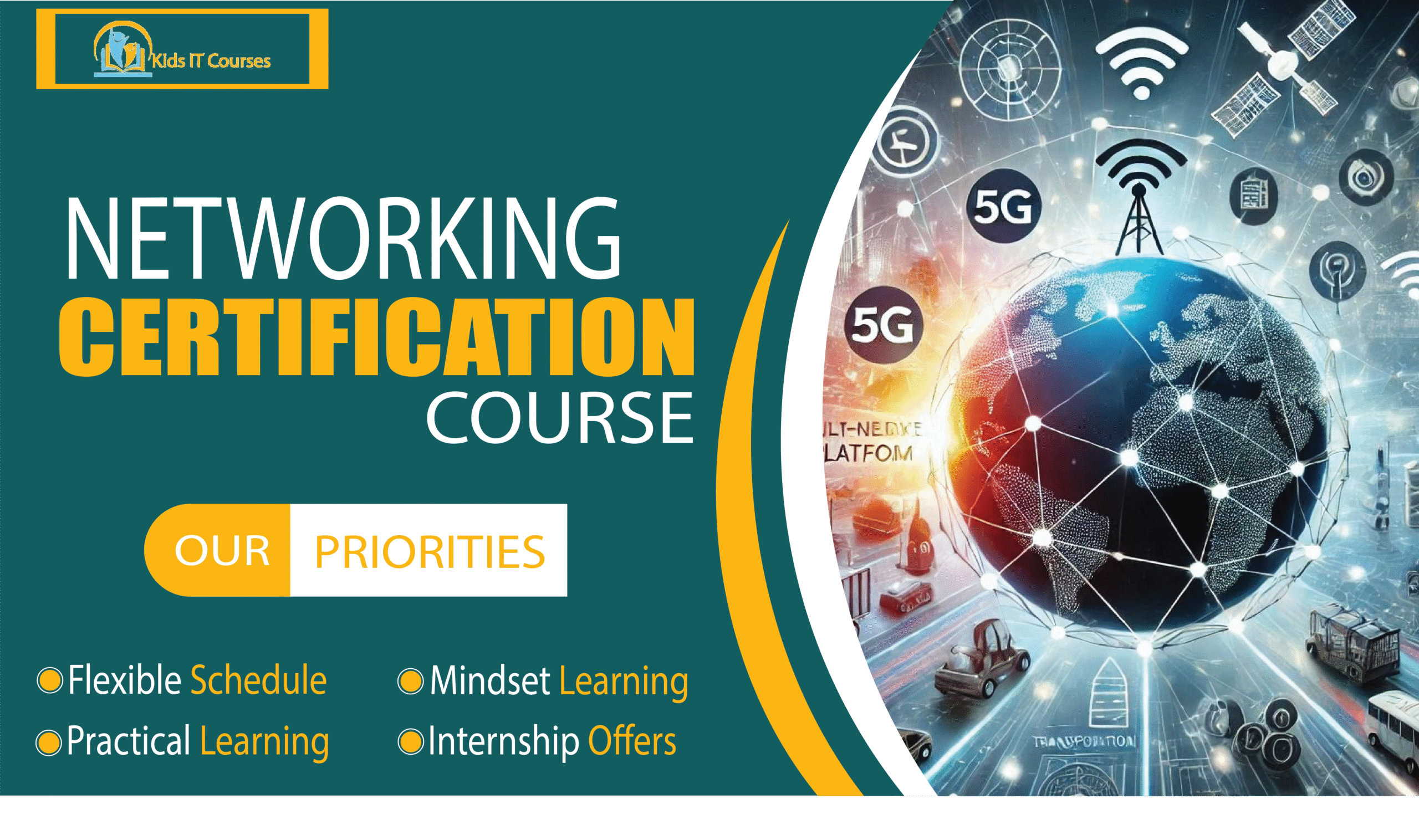
Networking Course for Kids
Definition
• Kids learn how computers talk to each other. They understand how the internet and Wi-Fi work.
• They see how files, games, or printers can be shared across devices. It makes using technology easier and smarter.
•The course explains cables, signals, and routers. Kids explore how information travels from one device to another.
• They learn how to fix simple connection problems. This grows their brain power and problem-solving skills.
• Kids learn to keep their data safe on networks. They understand what’s okay to share and what’s not.
• Knowing networks is a big part of IT and tech jobs. Learning it early gives them a strong foundation for later.
Importance
• Kids learn how computers connect and share information. It’s like teaching them the secret language of machines!
• They understand how networks work step by step. This sharpens their thinking and planning skills.
• They find out how websites, emails, and Wi-Fi work. It helps them become smarter internet users.
• Kids learn how to keep their data and devices safe. They understand what to do and not do online.
• They set up small networks or connect devices. It’s fun and helps them feel confident with gadgets.
• Knowing about networks makes future tech courses easier. It builds a strong foundation for digital learning.
• Networking is used in every office, school, and business. Learning it early opens doors to exciting jobs later.
Advantages for Networking Course For Kids
• Kids learn how computers share data with each other. It helps them understand what happens behind Wi-Fi and the internet.
• They discover how websites open, how emails send, and how devices connect. This makes online use smarter and safer.
• They learn to fix small connection problems and follow network steps. It trains their minds to think in order and solve issues.
•Kids understand how to protect data and stay safe online. It teaches them to use the internet wisely.
• They try fun tasks like setting up simple networks or sending test messages. This builds tech skills through play.
• Working on networks helps kids share ideas and help others. They learn teamwork and clear communication.
• Networking is used in schools, offices, and big tech jobs. Learning it now gives kids a big head start for the future!
Session 1 : What is Networking?
What is a network? (Examples: school, home, internet)
Types: LAN, WAN, Wi-Fi, Ethernet
Why we use networks (games, messages, files)
Real-world examples (video calls, online games)
Session 2 : Inside a Home Network
Devices: modem, router, switches
How Wi-Fi and cables work
IP address basics
Activity: Draw your home network map
Session 3 : How the Internet Works
What happens when you type a website?
Servers, clients, and DNS
Packets and data travel
- Trace route activity with
pingor visual tool
Session 4 : Online Safety & Firewalls
- Password protection & encryption basics
- What is a firewall?
- Internet safety for kids (never share personal info)
- Create a digital safety poster
Session 5 : Wireless vs Wired Connections
Differences between Wi-Fi and Ethernet
Strengths and weaknesses
How devices connect to a router
Mini experiment: test Wi-Fi speed around the house
Session 6 : IP Addresses & Ports (Simple Intro)
What is an IP address (like a digital home address)?
What is a port (like a door for apps)?
Dynamic vs static IPs (basic overview)
Use “What’s my IP” safely with guidance
Session 7 : Networking in Games & Devices
- Online multiplayer games and how they connect
Local multiplayer using LAN
Smart TVs, Alexa, game consoles — all use networks
Quiz: What’s online and what’s not?
Session 8 : Build a Mini Network & Review
Set up a mock network (paper-based or using simulation tools like Cisco Packet Tracer or Tynker)
Label all parts (router, devices, data paths)
Present a simple network design
Final quiz + award certificate
Bonus Materials:
Printable sheet for kids to draw and label their home Wi-Fi setup
- Fun definitions for router, IP, server, DNS, etc.
Creative pledge sheet for online behavior and cybersecurity
Build a cardboard “router” for physical mockups
- Editable PDF certificate for course completion
